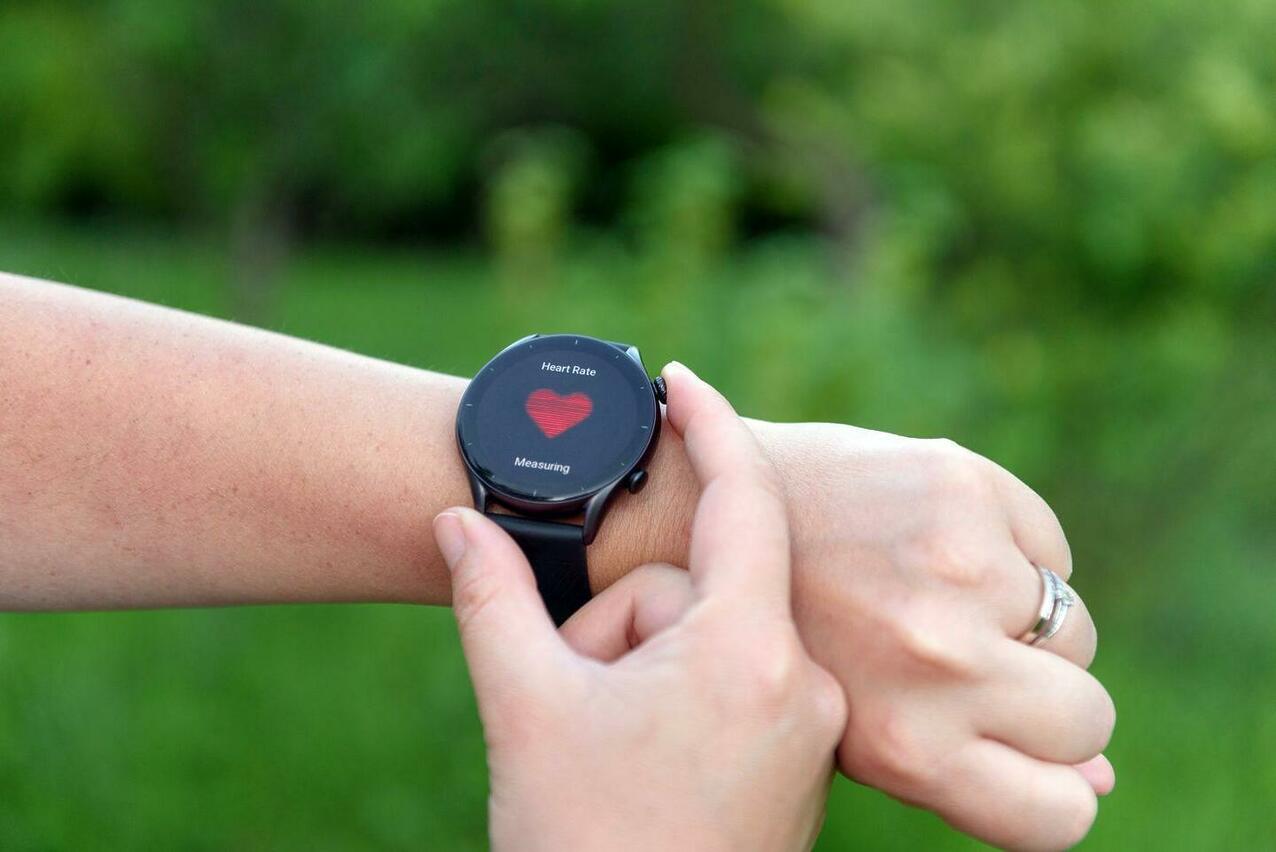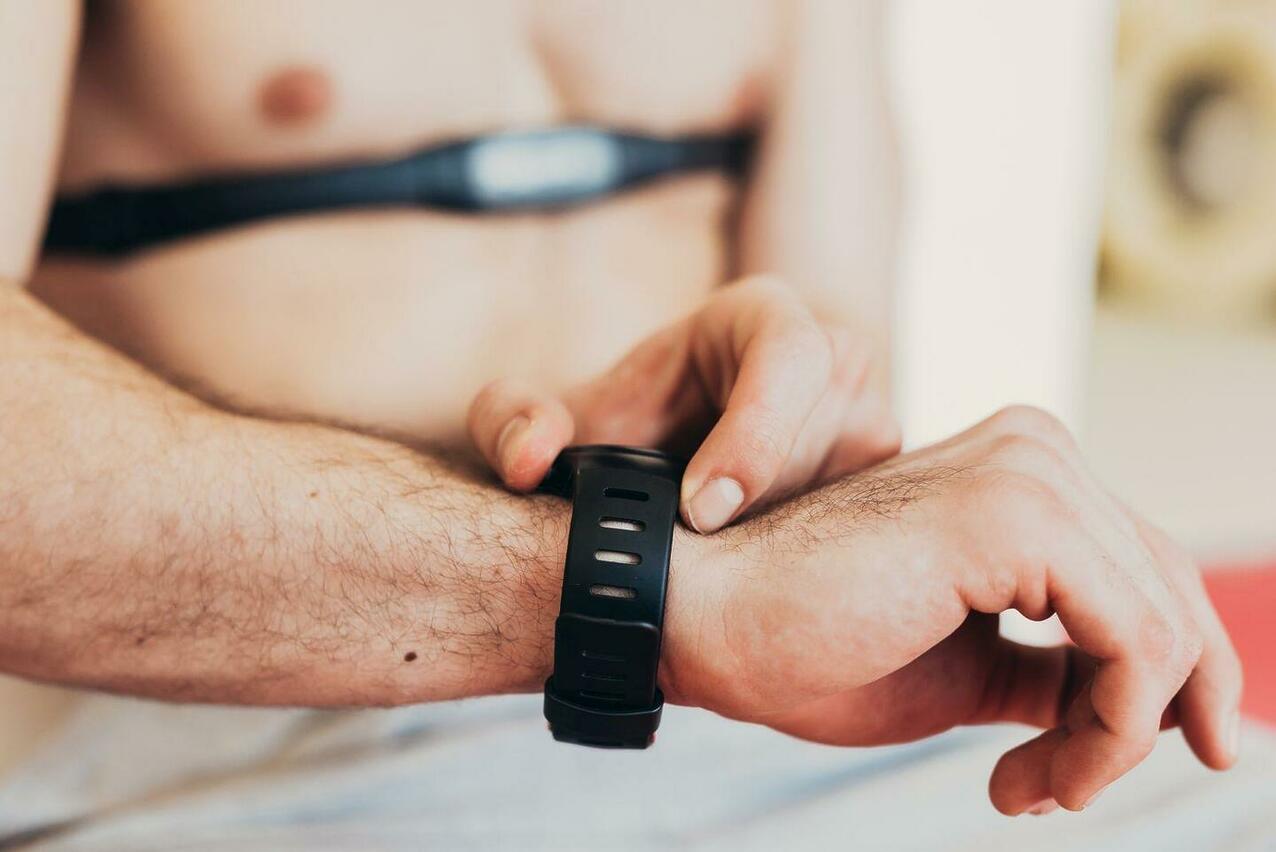Before power meters became a thing, heart rate training was the main tool for building a solid, strong foundation and improving the cyclist’s performance. And while power meters are becoming increasingly more popular and accessible, heart rate monitors are closing in on them. Here’s a basic, easy guide to get you started in this alternative way of measuring your performance:
Step 1: Basic equipment

This is what you need:
- A bike. You’ll experience more benefits if your bike is in good condition and well adjusted to your measurements. That way, you’ll get the best out of it while feeling more comfortable and preventing injuries.
- A heart rate monitor strap/sensor combined with a cycling computer, a smartwatch or a smartphone. You could also use a smartwatch with a built-in heart rate monitor.
The heart rate monitor strap combined with a cycling computer is the most common choice among cyclists. You have to sync the heart rate monitor with your device and adjust the screen display to show the information you need, such as your current pulse, interval/lap pulse and average pulse, to analyze the data afterwards.
There are many types of heart rate monitors, and you can sync them to any device as long as they’re both compatible with each other and the connection system they support (Bluetooth and/or Ant+).
Step 2: Know your Resting Heart Rate (RHR)
Your resting heart rate is a useful piece of information that lets you assess your fitness level, and your cardiovascular health. If you measure it regularly, you can see how to optimize your training sessions and improve your overall well-being.
How to measure your Resting Heart Rate

The best way to measure your resting heart rate is right after waking up in the morning, before getting out of bed. Use a heart rate monitor or take your pulse manually either on your wrist or your neck for 30 seconds. Then, multiply the result by 2.
It’s important to measure your resting heart rate at the same time every morning in order to achieve more precise and comparable results.
Don’t worry too much about regular, daily fluctuations, but make sure to keep track of how weeks or even months of training + rest affect your fitness level.
A lower resting heart rate can indicate you’re in good cardiovascular shape. The more efficient your heart is at pumping blood, the lower your resting heart rate will be. A gradual resting heart rate decrease could indicate improvement in your cardiovascular health and physical condition.
Stress and fatigue can alter your resting heart rate. An unusual increase could possibly indicate your body needs more recovery time, so you could opt for lighter training sessions to allow for a proper recovery.
Significant fluctuations in your resting heart rate could indicate possible health issues or changes in your physical condition. A sudden increase could be a sign of stress, illness or excessive training, which consequently also increases the risk of injury. Keeping track of these fluctuations helps prevent long-term health issues.
Step 3: Know your Maximum Heart Rate (HR max)
Calculating your maximum heart rate is essential to establish your training zones and adjust your sessions to your physical condition. It’s not recommended to just subtract your age from 225 (for women) or 220 (for men), because this method is too generic and each person has a different limit. You can adjust your training zones according to your maximum heart rate to guarantee that the intensity of your training fits your goals and your physical condition.

Ideally, you should perform a cardiac stress test, especially if you’re new to the sport or have any medical conditions. The vast majority of the modern cycling computers provide apps that help you do this test outdoors or indoors. Otherwise, you can try this method:
- Find a long, more or less steady climb, with a moderate gradient (5-6%).
- Warm up for 30 minutes at a rhythm that allows you to talk without feeling out of breath.
- Increase to a medium-paced rhythm for 15 minutes (talking in this case will be harder), and try to match the end of this section right with the start of the climb.
- Increase the rhythm gradually for 5 minutes. At the very last minute, go all in to reach your maximum heart rate.
- If this is your first time doing this, your legs will most likely fail you way before your heart does, but that’s normal.
- You can repeat this entire process to compare two different results for your maximum heart rate and calculate an average rate, but you probably won’t be as efficient on your second try as you were on the first one.
Step 4: Identify your training zones
Now that you have your maximum heart rate, you can calculate your specific training zones based on percentage. These zones determine the intensity of your training and help you structure your sessions effectively to achieve improvements in your endurance, speed or strength.

The number of training zones based on your heart rate can vary depending on the system you have used to calculate them, but usually they’re split into five:
Zone 1 – Recovery (50-59% of your HR max): This zone is ideal to warm up and achieve an active recovery. Your heart rate is at its lowest, which promotes recovery and helps in aerobic base training. Within this zone, you can maintain a conversation without feeling out of breath.
Zone 2 – Endurance (60-69% of your HR max): An easy rhythm, perfect for building the aerobic base we mentioned above, and a comfortable level for long training sessions. You can still maintain a conversation, but your breathing will be deeper.
Zone 3 – Tempo (70-79% of your HR max): This zone implies a moderate to high effort level, and improves cardiovascular endurance (in other words, aerobic fitness). Training sessions within this zone increase your lung capacity and improve your blood circulation. It is possible to keep talking, but harder than in the previous zones.
Zone 4 – Lactate Threshold (80-89% of your HR max): In this zone, the effort level is high and intense, improving aerobic capacity and lactate tolerance. Intervals in this zone contribute to increased heart rate and efficiency. Talking becomes rather hard when in this zone.
Zone 5 – VO2 Max (90-100% of your HR max): Here the effort is at its maximum level, ideal to improve speed and strength. Short, powerful intervals within this zone are useful to improve anaerobic capacity. Conversation is almost impossible. You’ll only be able to produce sounds of exhaustion at this point.
There are two zones we could add to this list, but the system would be too complicated and, if you’re new to this, you really don’t want to know what’s beyond Zone 5. We could also simplify this system a little bit and combine the first three zones into one, as most cycling outings for beginners will always move around those three zones. Once you have spent enough time pedaling and training, start paying more attention to your limits and start pushing them.
Step 5: Training plans
Now, you can structure your training sessions with a more effective approach using your HR max and the training zones. Ideally, you should seek professional advice from a personal trainer if you want to go all in. You could also use apps with different training plans (Zwift, Garmin, TrainingPeaks). However, if all you want is some structure and a workout plan, you could do it yourself just fine. There’s a lot of information on different plans and training sessions. Here are some practical examples:
Endurance and aerobic base training (zones 1-2): Slow, easy rides, keeping your heart rate in between zones 1 and 2. Build endurance and get used to riding the bike.
Example: A 60-minute ride at a comfortable pace, keeping your heart rate in zone 2.
Aerobic training (zones 3-4): Increase of intensity to improve cardiovascular capacity.
Example: A 60-minute ride. Warm-up for 15 minutes in zones 1 and 2. Do four 5-minute repetitions in zone 4, followed by 5 minutes in zone 3.
Interval training (zone 5): Increase speed and strength in short periods of time.
Example: 60-minute ride. Warm-up for 20 minutes in zones 1 and 2. Do eight 20-second repetitions in zone 5, followed by 40 seconds of recovery in zone 1.
These are just some general guidelines. You can adjust the duration of each interval to your physical condition and specific goals. Like we said, it is always advisable to seek advice from a professional or a personal trainer that can help you adapt your training sessions to your personal needs, but we understand that beginner cyclists might not always have the chance to do so.
In a nutshell, using your heart rate as a tool in cycling is still crucial in order to customize and optimize your training sessions, track your effort and endurance, evaluate your performance and consider fatigue, while also reducing health risks.




